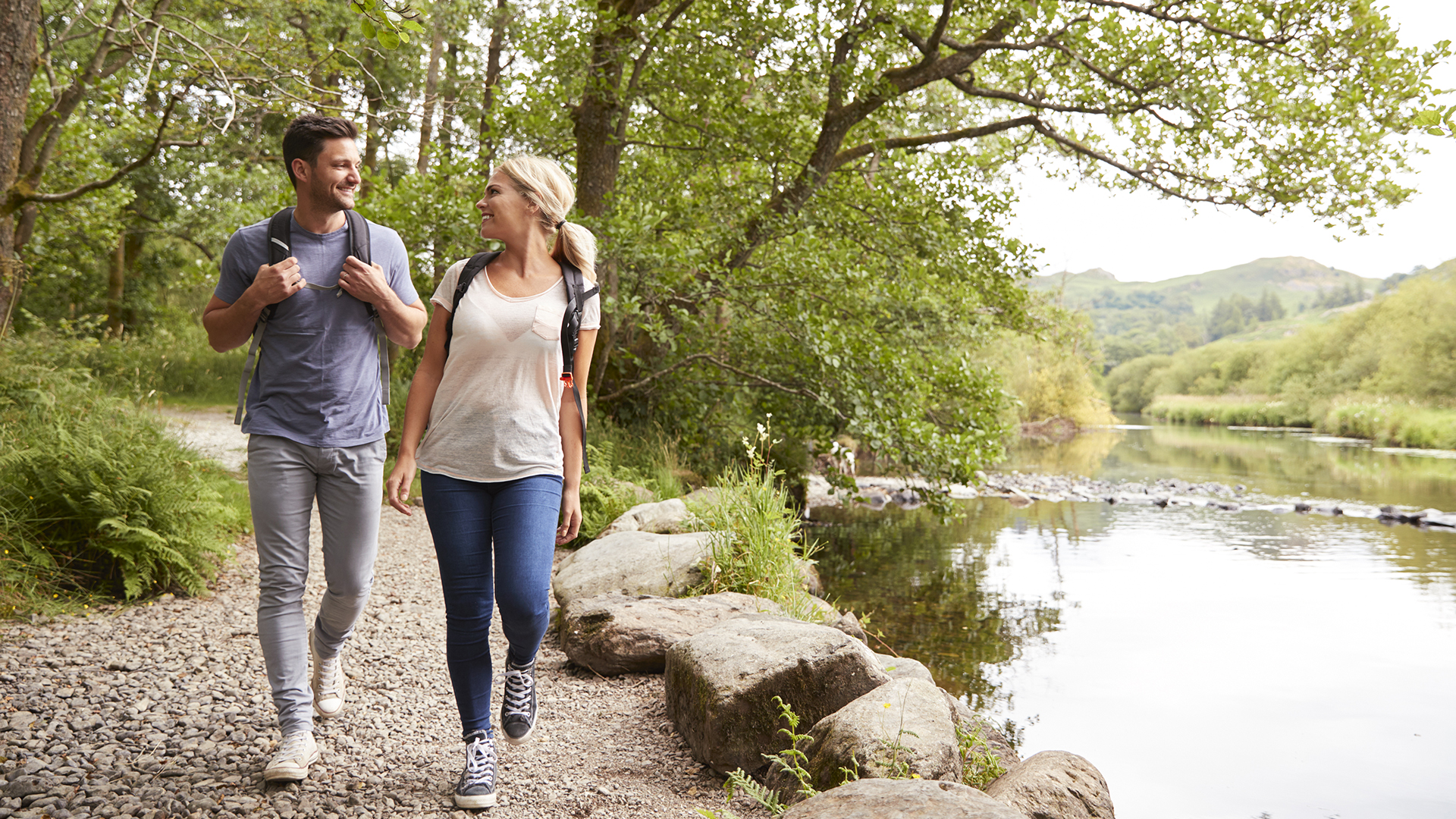
By Larry Kidder | Active walking can take the benefits of walking to the next level for you, burning more calories and conditioning your lower extremities any time you walk.
The fitness industry has long touted the benefits of aerobic exercise—sustained intense exercise that raises the heart rate to certain levels for a specified length of time.
However, an increasing number of research studies are showing that the benefits of consistent walking are almost at the same levels as aerobic exercise in regard to general health—and cardiovascular health in particular. In addition, the damage to joints caused by many forms of strenuous aerobic exercise is often conveniently overlooked.
Consistent and regular walking, by itself, brings major health benefits. But what if you could increase the calories you burn, as well as improve the conditioning of the muscles from your waist down, simply by walking differently?
But first, here are “Five Surprising Benefits of Walking,” published in Harvard Health Publishing, a publication by the Harvard Medical School and based on research done at the university and elsewhere.
Walking counters the effects of weight-promoting genes. A Harvard study of 32 obesity-promoting genes for more than 12,000 subjects found that a brisk hourly walk reduced the impact of these genes by half.
Walking helps tame your sweet tooth. Two University of Exeter studies discovered that a 15-minute walk actually helped curb cravings for chocolate—especially in reaction to stress. Other current research supports this effect for a variety of sugar-based snacks.
Walking reduces the risk for breast cancer. An American Cancer Society study found that women who walked seven or more hours a week reduced their risk for breast cancer by 14 percent over those who walked three or fewer hours per week. There is also a proven risk connection between weight and supplemental hormone use and breast cancer, and walking has been shown to provide protection against these risk factors.
Walking eases joint pain. In several studies, researchers showed that walking eased arthritic pain by helping to loosen and lubricate the joints. It also helps to prevent arthritis in the first place by the same principle. In a third way, walking helps to strengthen the tendons, ligaments, and muscles that support the joints.
Walking boosts immune function. In a study of more than 1,000 men and women, researchers found that those who walked at least 20 minutes a day, five days a week, missed work 43 percent less than those who exercised once a week or less. In addition, it was shown that the severity and duration of their symptoms were significantly reduced.
There are two forms of walking: the mindless type, where your joints do receive some wear and tear—though not nearly as much as running; and the mindful type, where you purposely walk smoothly, heel to toe, and flex your calf muscles while doing so.
With mindless walking, the entire body takes more of a beating because it is the least engaged and supported—next to just sitting idly in a chair.
You will see an excellent example of mindful walking if you visit the Tomb of the Unknown Soldier at Arlington Cemetery near Washington, D.C. The steps of the sentry walking back and forth are smooth and measured. He or she walks heal to toe in a purposeful manner. In reality, this style of walking is far more efficient and much less taxing on the feet—which take the brunt of abuse with mindless walking.
If you are taking part in an extended hike and your feet become fatigued and sore, try walking mindfully, engaging your calf muscles and smoothing your steps. You will find that the pain will subside and you will be able to continue pain-free. When standing in one place for an extended period of time, your feet will likely become increasingly sore. By flexing and rocking on your feet from toe to heel and back, you can reduce or eliminate that soreness.
Active walking can be done any time you’re—well—walking. That means in the store, back and forth to the office, down to the mailbox, and anywhere else you need to go. You can be conditioning the muscles of your lower extremities, increasing your stability, and burning more calories—all at the same time.
For more information about active walking, as well as conditioning your body when you climb stairs, or as a series of simple exercises you can do in your office or at home (when you can’t make it to the gym), read the following story on Drayson Center News: “Combat the Aches and Pains of Non-exercise When You Can’t Make It to the Gym.”
